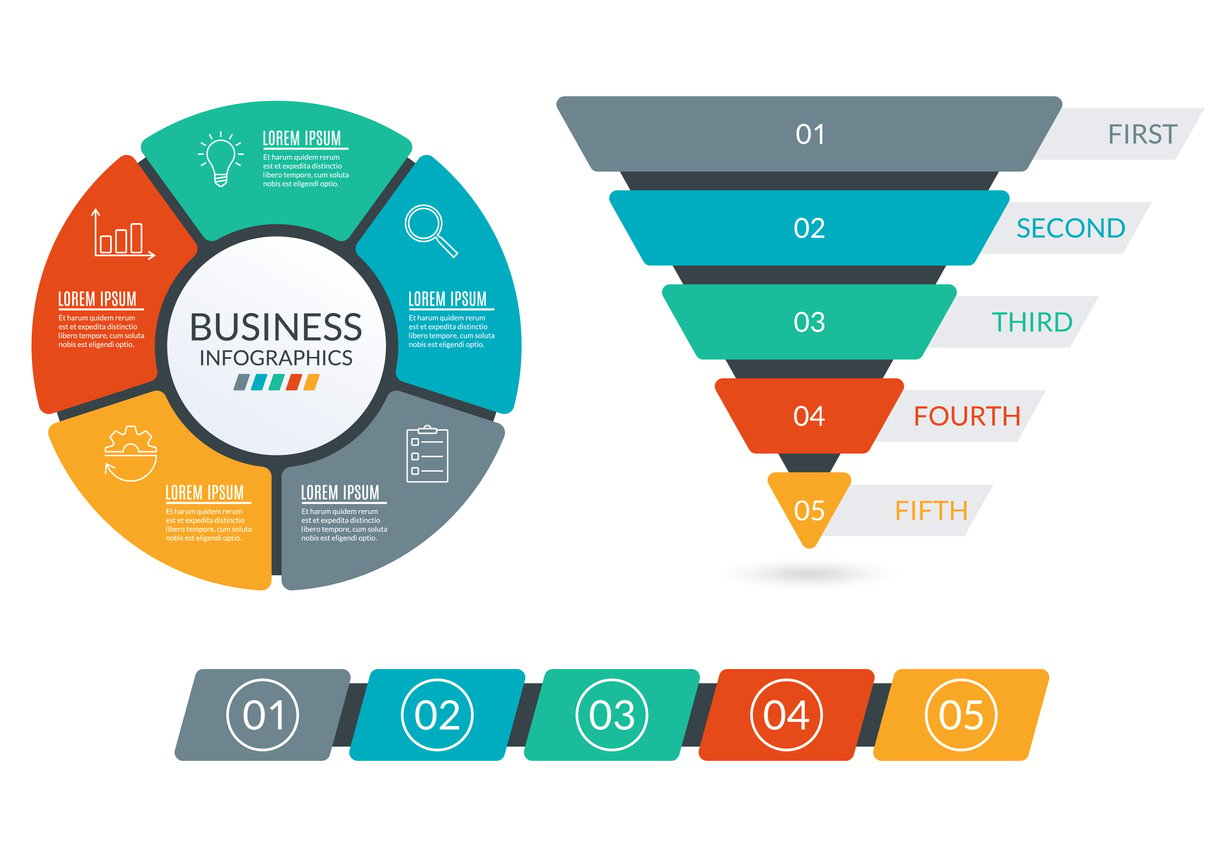
The Ultimate Guide to SWOT Analysis Examples: From Students to Businesses
 Updated on
Updated on
 By Carlos Correa
By Carlos Correa
Carlos Correa
Carlos has been involved in the sales space for well over ten years. He began in the insurance space as an individual sales agent, managing teams as s...
learn more
Carlos Correa
Carlos has been involved in the sales space for well over ten years. He began in the insurance space as an individual sales agent, managing teams as s...
Table of Contents
Table of Contents
Trying to plan without a clear structure often feels like throwing darts blindfolded. You're juggling reports, opinions, and endless data points, yet none of it adds up to a strategy you can trust. It's easy to get stuck second-guessing where to focus or how to prioritize.
That's exactly why SWOT analysis has stood the test of time.
Simple to use, yet powerful enough to guide billion-dollar companies, it helps you cut through the noise and focus on what truly matters.
And in this example of swot analysis guide, you're not just going to see a definition. You'll walk through detailed SWOT analysis examples you can adapt to your business, your studies, or even your personal career growth.
What Is a SWOT Analysis?
When you're making decisions without a framework, it's easy to overlook blind spots. You might be pouring energy into marketing without realizing internal weaknesses are holding you back.
Or maybe you're so focused on day-to-day operations that you miss an external opportunity your competitors are already chasing.
A SWOT analysis organizes your Strengths, Weaknesses, Opportunities, and Threats into a simple, visual snapshot so you can see your situation clearly and act with confidence.
Here's a closer look:
- Strengths highlight what you do well.
- Weaknesses call out your vulnerabilities.
- Opportunities identify external chances for growth.
- Threats uncover external risks that could impact your success.
Other frameworks exist, like PEST or Porter's Five Forces, but they tend to look at just one angle. SWOT is versatile because it combines the internal with the external, giving you a complete picture in one place.
That's why you'll see it used everywhere from global boardrooms to classrooms.
Why SWOT Analysis Matters

Think about your last planning session. Did it end with clear direction, or with a whiteboard full of random ideas and no real path forward?
Without structure, even the smartest teams end up stuck debating rather than deciding.
A SWOT analysis matters because it forces clarity. It takes all those scattered ideas and organizes them into a framework that highlights what really matters. The benefits are hard to ignore:
- It simplifies complex information into one chart you can actually use.
- It brings alignment across teams, because everyone can see the same picture.
- It highlights both opportunities and threats so you're not caught off guard.
- It works in nearly any context: business strategy, marketing campaigns, student projects, or even personal career planning.
SWOT also plugs directly into bigger goals. If you're building a strategic sales plan, SWOT can surface the strengths to leverage and the weaknesses that need sales training.
If you're optimizing a funnel, it can reveal the external threats or internal gaps holding conversion back.
In other words, SWOT analysis matters because it gives you structure, focus, and insights you can actually act on.
SWOT Analysis Example Chart
Concepts are easy to understand in theory, but much harder to apply in practice. If you've ever tried to run a SWOT analysis, you've probably seen people write vague things like "marketing" under strengths or "competition" under threats.
The problem is that broad entries like that don't give you anything actionable.
Here's what a more useful SWOT analysis example chart looks like.
Imagine a small eco-friendly clothing business:
|
Strengths |
Weaknesses |
Opportunities |
Threats |
|
Strong brand identity in the community |
Limited online presence |
Rising demand for eco-friendly fashion |
Intense competition from global brands |
|
Sustainable sourcing practices |
Higher production costs than competitors |
Expansion into e-commerce |
Supply chain disruptions |
|
Loyal repeat customers |
Small marketing budget |
Partnerships with local influencers |
Rising material costs |
Notice how specific the entries are. Instead of "good brand," the business calls out a strong identity in the local community. Instead of "competition," it points to large global brands. That level of detail is what makes the analysis valuable.
From this example, the business might decide to:
- Lean into its eco-friendly sourcing to stand out in the market.
- Invest in e-commerce to expand its reach beyond local buyers.
- Partner with influencers to grow visibility without overspending.
The point isn't to fill in four boxes. It's to uncover practical insights that shape real decisions.
Business SWOT Analysis Example

Let's step into a SWOT analysis example small business setup you might find familiar.
Imagine you run a boutique digital marketing agency (you probably do.) Business is steady, but competition is everywhere, and you're not sure how to keep growing without burning out your team.
Here's what your SWOT analysis example looks like:
|
Strengths |
Weaknesses |
Opportunities |
Threats |
|
Experienced team with diverse skills |
Limited budget for advanced tools |
Growing demand for TikTok and influencer marketing |
Larger agencies targeting small businesses |
|
Strong client relationships and referrals |
Heavy reliance on referrals for new clients |
Small businesses outsourcing more marketing |
Economic downturns cutting client budgets |
|
Agility to adapt faster than big agencies |
Lack of standardized processes causing inefficiency |
Partnerships with SaaS platforms for co-marketing |
Algorithm changes on Google and Meta |
The strengths confirm that this agency already has strong foundations: a talented team, client trust, and the flexibility to adapt. These are advantages that larger, slower-moving competitors can't always match.
But the weaknesses reveal cracks. The lack of advanced tools limits efficiency, and relying almost entirely on referrals means growth is unpredictable. Without stronger processes, scaling becomes even harder.
Opportunities show that the market is opening up. TikTok, influencer campaigns, and small businesses outsourcing more work are ripe for exploration. Building partnerships with SaaS platforms could also open new client streams and credibility.
The threats, however, are real. Larger agencies are creeping into the small-business market, budgets tighten during downturns, and the whims of search and social algorithms could wipe out campaign effectiveness overnight.
Based on this analysis, here's how the agency might move forward:
- Adopt affordable inside sales software to improve efficiency without breaking the bank.
- Launch a proactive outbound campaign to reduce reliance on referrals.
- Position themselves as specialists in TikTok advertising, a niche where bigger agencies aren't as agile.
- Build more standardized processes so the agency can scale sustainably.
This single SWOT analysis takes what felt like an overwhelming situation and turns it into a clear, prioritized plan.
Company SWOT Analysis Example

Big companies use SWOT just as often as small businesses, because complexity multiplies with scale.
Let's look at Tesla as a SWOT analysis as a company example.
|
Strengths |
Weaknesses |
Opportunities |
Threats |
|
Strong brand recognition as an EV leader |
Production bottlenecks |
Increasing competition from legacy automakers |
|
|
Innovation in battery tech and software |
Heavy reliance on Elon Musk's reputation |
Expansion into energy storage and solar |
Government policy shifts on subsidies |
|
Loyal customer base and community |
High vehicle prices limit accessibility |
First-mover advantage in autonomous driving |
Supply chain risks (chips, lithium) |
Tesla's strengths make it a market leader, but weaknesses like bottlenecks and high prices leave room for challengers. Opportunities such as energy storage and autonomous driving are massive, while threats from established automakers and policy changes could hit hard.
Even household-name companies use SWOT to stay grounded. If it works for Tesla, it can absolutely work for your business.
Marketing SWOT Analysis Example

Marketing campaigns can burn cash fast if you're not clear on your positioning. That's why running a SWOT before launching is so useful.
Imagine your tech startup planning a new product launch campaign:
|
Strengths |
Weaknesses |
Opportunities |
Threats |
|
Strong in-house design team |
Limited budget for paid media |
Rising demand for product-led growth content |
Competitors with bigger ad spend |
|
Clear value proposition |
Small social following |
Influencer partnerships |
Market saturation in SaaS tools |
|
Agile campaign testing |
No dedicated PR team |
Leveraging webinars and live demos |
Negative reviews damaging reputation |
The strengths here suggest the startup can create sharp, high-quality content and adapt quickly. Weaknesses reveal gaps in distribution. Opportunities point to influencer marketing and webinars as affordable ways to reach people, while threats remind the team to monitor reviews and market noise.
A marketing SWOT stops you from running campaigns in the dark. It shows you where to amplify and where to tread carefully.
Personal SWOT Analysis Example
SWOT isn't just for businesses. It's a powerful self-assessment tool too.
Let's look at two cases:
Student SWOT Analysis Example
|
Strengths |
Weaknesses |
Opportunities |
Threats |
|
Strong writing skills |
Weak presentation delivery |
Join debate or public speaking clubs |
High competition for scholarships |
|
Good time management |
Struggles with group projects |
Access to mentorship programs |
Stress during exams |
|
Motivated and disciplined |
Limited networking |
Internships available through school |
Rising tuition costs |
This personal SWOT analysis provides a clear overview of individual strengths, weaknesses, opportunities, and threats, which can be invaluable for personal development and career planning.
Now, let's look at how the same strategic framework can be applied in a professional context.
Professional SWOT Analysis Example
|
Strengths |
Weaknesses |
Opportunities |
Threats |
|
Strong sales track record |
Limited technical knowledge |
Professional certifications |
Automation replacing low-level sales tasks |
|
Excellent client relationships |
Public speaking anxiety |
Growing demand for consultative selling |
Younger competitors with tech fluency |
|
Resilient under pressure |
Struggles with time blocking |
Internal training programs |
Burnout risk |
If you're a student, a personal SWOT can guide you toward opportunities like clubs, internships, and scholarships. If you're a professional, it helps you target skills that will keep you competitive. It's like a mirror that not only shows you where you stand, but also where you can grow.
Industry-Specific SWOT Examples
Seeing SWOT in action across industries makes it easier to understand how adaptable it is.
Let's look at three very different examples.
Clothing Business SWOT
If you're in fashion, your supply chain and trends can make or break you. Strengths might include sustainable sourcing and a loyal local following.
But high production costs and limited reach are weaknesses that slow growth.
The opportunities are clear: e-commerce expansion and influencer partnerships. At the same time, fast-fashion giants and rising material prices threaten margins. SWOT gives you clarity on where to lean in and where to tread carefully.
Sports Team SWOT
Performance is only half the story in sports.
A dedicated fan base and talented players are undeniable strengths, but financial limits and shallow bench depth expose weaknesses. Opportunities come through sponsorships and digital fan engagement, while threats include injuries or dwindling ticket sales.
Without this analysis, it's easy to focus only on the field and miss the bigger business picture.
Automotive/Car Dealership SWOT
Dealerships today are caught between tradition and disruption.
Strong locations and customer trust still matter, but limited EV stock and high overheads hold many back. The EV boom creates exciting opportunities, yet supply chain delays and aggressive online competitors threaten stability.
A SWOT here helps you plan for a market that's changing faster than ever.
Here's a comparative table that condenses the information above.
|
Industry |
Strengths |
Weaknesses |
Opportunities |
Threats |
|
Clothing |
Sustainable sourcing |
High costs, limited reach |
E-commerce, influencers |
Fast fashion rivals |
|
Sports |
Loyal fans, strong players |
Financial limits, weak bench |
Sponsorships, digital engagement |
Injuries, ticket decline |
|
Automotive |
Prime location, customer trust |
Limited EV stock, high overhead |
EV demand growth |
Supply chain issues, online rivals |
Different industries face different pressures, but SWOT adapts to all of them, and it can adapt to yours, too.
Common Mistakes in SWOT Analysis (and How to Avoid Them)

A SWOT analysis only works if you do it well.
Too often, people rush through the process, fill the boxes with vague ideas, and end up with a chart that looks neat but offers no real insight. That's not just unhelpful; it can actually create a false sense of direction.
Let's walk through the most common mistakes and, more importantly, how you can avoid them.
Being Too Vague
It's tempting to write "marketing" under strengths or "competition" under threats. But what does that really mean? If you can't act on it, it doesn't belong in your SWOT. The fix is to drill down into specifics. Instead of "marketing," maybe your real strength is the consistent flow of content that brings in organic traffic.
Instead of "competition," maybe the real threat is that two new rivals have undercut your pricing. The more precise you are, the more useful your analysis becomes.
Mixing Up Strengths and Opportunities
Another trap is confusing internal and external factors.
Strengths and weaknesses are about what's inside, such as:
- Your control
- Your team
- Your processes
- Your product
Opportunities and threats, on the other hand, come from outside — market trends, customer behavior, regulatory shifts.
If you blur the line, you blur your strategy. Always ask yourself: is this something we control, or is it happening in the environment around us?
Overlooking External Threats
It's human nature to focus on the positive, but ignoring risks doesn't make them go away. Competitors, supply chain disruptions, or policy changes can blindside you if you leave them out. A good SWOT forces you to acknowledge uncomfortable truths.
Think of it as preparing for a storm: you might not like the forecast, but it's better than getting caught without an umbrella.
Treating SWOT as a One-Off
Finally, the biggest mistake is treating SWOT as a "done once and forgotten" exercise. Markets shift, customer needs evolve, and competitors adapt. If you only revisit SWOT once a year — or worse, once ever — you'll miss critical changes.
The businesses that benefit most from SWOT are the ones that treat it as a living document, revisiting and updating it whenever conditions change.
How to Create Your Own SWOT Analysis
Now that you know what to avoid, let's talk about how to actually create a SWOT analysis that works. You don't need fancy software or endless hours, but you do need focus, honesty, and the discipline to follow through.
Define the Purpose
Start by asking yourself: what am I analyzing? Is it my entire business, a single department, a marketing campaign, or even my personal career? Without a clear purpose, your SWOT will feel scattered, and the insights won't connect to your goals.
Gather Input
One perspective isn't enough. Relying only on your own view risks bias. Pull in data from your sales pipeline, feedback from your team, or even customer surveys. The more input you gather, the more accurate and balanced your analysis will be.
List Strengths and Weaknesses
Now look inward. Be brutally honest about what you do well and where you're struggling. Strengths are the things that set you apart, maybe your customer service is unmatched or your product solves a unique pain point.
Weaknesses are the gaps holding you back, whether that's outdated systems, limited resources, or poor brand recognition. Acknowledging weaknesses isn't defeat; it's the first step to improvement.
Map Opportunities and Threats
Next, turn outward. Where is the market shifting in your favor? Maybe new technology is opening doors, or customer demand is trending toward your type of solution. At the same time, don't ignore risks.
Competitors moving into your space or new regulations can impact you more than you expect. Balancing these external factors with your internal ones gives you the full picture.
Create Your Chart or Table
Once you've captured everything, organize it visually. A simple four-column chart works best because it makes it easy to spot connections.
Seeing a weakness directly across from a threat, for example, can highlight urgent vulnerabilities you need to address right away.
Apply Insights to Strategy
This is the step most people miss. A SWOT isn't about filling in boxes, it's about using the insights to drive action. Maybe your analysis shows that weak lead generation is a vulnerability. That insight should feed directly into your strategic sales plan.
Or maybe a new opportunity shows up in your funnel analysis.
That's your cue to adjust your funnel optimization strategy.
Final Thoughts - SWOT Analysis Example
We've looked at how businesses, students, sports teams, and even global companies use this framework. The lesson is the same across every example: when you're clear about your strengths, honest about your weaknesses, aware of the opportunities ahead, and prepared for the threats around you, you make better decisions.
But here's the catch: a SWOT analysis only takes you so far on its own. To get real results, you need to connect those insights to tools that help you take action.
That's exactly what Ringy is built for.
Instead of juggling multiple platforms, Ringy gives you everything in one place:
- Lead management
- Automated nurturing
- Pipeline tracking
- Performance insights
It's the system that takes your SWOT findings and turns them into momentum.
If you're ready to stop guessing and start acting, now is the time. Try Ringy CRM today and see how you can move from analysis to results.

Skyrocket your sales with the CRM that does it all.
Calling? Check. SMS? Check. Automation and AI? Check. Effortlessly keep in touch with your customers and boost your revenue without limits.

Take your sales to new heights with Ringy.
Sales in a slump? Ringy gives you the tools and flexibility you need to capture leads, engage with them, and turn them into customers.
Subscribe to Our Blog
Enter your email to get the latest updates sent straight to your inbox!
Categories
Related Articles




































































































